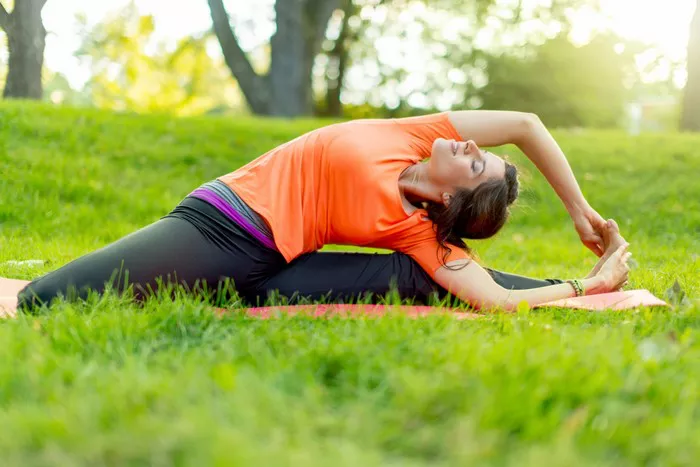In recent years, yoga has evolved beyond traditional practices to encompass a diverse range of styles and techniques. One such variation gaining popularity is Oxygen Yoga. Developed by O2 Yoga Inc., this contemporary form of yoga combines elements of traditional Hatha yoga with modern fitness principles, emphasizing the importance of breathwork and oxygenation throughout the practice. In this article, we delve into the intricacies of Oxygen Yoga, examining its origins, key components, and distinctive features.
Origins and Development
Oxygen Yoga traces its roots back to Vancouver, Canada, where Jen Hamilton founded O2 Yoga Inc. in 2003. Hamilton, a certified yoga instructor and fitness enthusiast, sought to create a fusion of yoga and fitness training that would appeal to a broader audience. Drawing inspiration from traditional Hatha yoga as well as her background in personal training and group fitness instruction, she developed the Oxygen Yoga method.
Hamilton’s vision was to offer a dynamic and challenging workout that not only strengthened the body but also enhanced overall health and vitality. She recognized the importance of breath in yoga practice and sought to integrate specialized breathing techniques to maximize oxygen intake and optimize performance. Through years of refinement and experimentation, Oxygen Yoga emerged as a comprehensive system blending yoga, Pilates, and strength training with a focus on breath-centric movement.
Key Components of Oxygen Yoga
1. Heat and Humidity: One defining feature of Oxygen Yoga classes is the incorporation of heat and humidity. Practitioners perform sequences of yoga poses and exercises in a heated room, typically maintained at temperatures ranging from 95 to 100 degrees Fahrenheit (35 to 38 degrees Celsius). The elevated temperature promotes flexibility, detoxification, and increased circulation, facilitating deeper stretches and enhancing the cardiovascular benefits of the practice.
2. Dynamic Sequencing: Oxygen Yoga classes are characterized by dynamic sequencing, with instructors guiding students through a series of flowing movements and poses designed to build strength, improve flexibility, and promote mindfulness. Sequences may vary in intensity and complexity, catering to practitioners of all levels, from beginners to advanced yogis.
3. Breathwork (Pranayama): Central to the Oxygen Yoga practice is the emphasis on breathwork, or pranayama. Practitioners are encouraged to synchronize their breath with movement, using deep, controlled breathing techniques to enhance oxygenation, reduce stress, and increase energy levels. Specific breathing exercises may be incorporated throughout the class to promote relaxation, focus, and mindful awareness.
4. Strength Training: In addition to traditional yoga poses, Oxygen Yoga classes often integrate elements of strength training and resistance exercises using bodyweight, bands, or light weights. These exercises target different muscle groups, helping to build muscular endurance, tone the body, and improve overall functional fitness.
5. Mindfulness and Meditation: While Oxygen Yoga places a strong emphasis on physical fitness, it also incorporates elements of mindfulness and meditation. Classes typically conclude with a period of relaxation and meditation, allowing practitioners to quiet the mind, cultivate inner awareness, and experience a sense of mental clarity and calm.
6. Variety of Class Formats: Oxygen Yoga offers a variety of class formats to suit different preferences and fitness goals. From traditional hatha-based flows to more dynamic and intense sessions, practitioners can choose from options such as Power Oxygen, Fusion, Core, and Yin Yoga. Each class format provides a unique experience, allowing individuals to customize their practice according to their needs and interests.
Distinctive Features and Benefits
1. Improved Oxygenation: As the name suggests, Oxygen Yoga places a strong emphasis on optimizing oxygen intake and circulation throughout the body. The combination of heat, humidity, and specialized breathing techniques enhances oxygen delivery to muscles and tissues, promoting greater endurance, stamina, and overall vitality.
2. Enhanced Flexibility and Mobility: Practicing yoga in a heated environment can significantly increase flexibility and mobility by warming up the muscles and soft tissues, making them more pliable and responsive to stretching. This can help prevent injuries, improve joint range of motion, and enhance athletic performance.
3. Detoxification and Cleansing: The heat and humidity in Oxygen Yoga classes promote sweating, which aids in the detoxification process by flushing out toxins and impurities from the body. Sweating also helps to cleanse the skin, leaving it feeling rejuvenated and refreshed.
4. Stress Reduction and Mental Clarity: Engaging in mindful movement and breathwork can have profound effects on mental well-being, helping to alleviate stress, anxiety, and tension. The meditative aspects of Oxygen Yoga promote relaxation and mental clarity, allowing practitioners to cultivate a sense of inner peace and balance amidst the demands of daily life.
5. Strength and Conditioning: In addition to its focus on flexibility and mindfulness, Oxygen Yoga provides a comprehensive workout that targets muscular strength, endurance, and cardiovascular fitness. By incorporating elements of strength training and dynamic movement, practitioners can build lean muscle mass, improve functional fitness, and enhance overall body composition.
6. Community and Support: Oxygen Yoga studios foster a sense of community and support, providing a welcoming environment where individuals of all ages, backgrounds, and fitness levels can come together to practice and grow. Experienced instructors offer guidance, encouragement, and modifications as needed, ensuring that everyone feels empowered and supported on their wellness journey.
Conclusion
Oxygen Yoga represents a modern and innovative approach to traditional yoga practice, blending elements of Hatha yoga, fitness training, and mindfulness to create a comprehensive system that promotes physical, mental, and emotional well-being. With its focus on breathwork, dynamic movement, and heat-enhanced flexibility, Oxygen Yoga offers a unique and transformative experience for practitioners seeking to improve their health, vitality, and overall quality of life. Whether you’re a seasoned yogi or new to the practice, exploring Oxygen Yoga can open doors to new levels of strength, flexibility, and inner awareness.
















